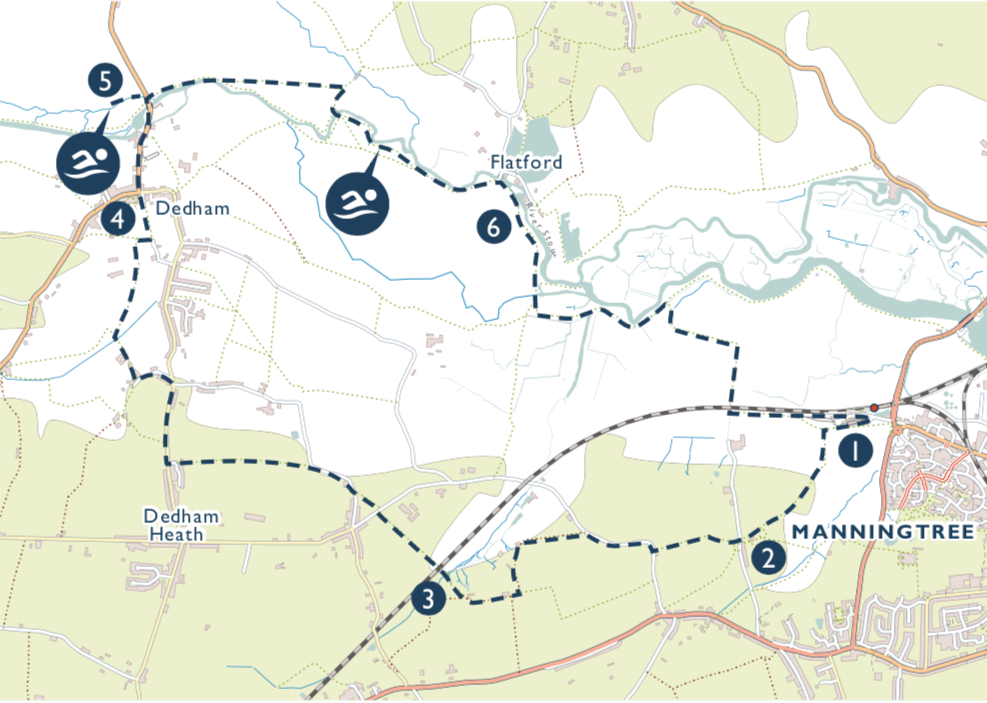Sunday 16th September, Manningtree to Dedham and back via Flatford. A delightful way to experience Constable country by walking and swimming this 7.5 mile route taken from the Wild Swimming Walks book, walk number 9. The painter grew up in the nearby village of East Bergholt, the son of a prosperous miller who owned the water mills at Dedham and Flatford.
Made famous by the Hay Wain painting, Flatford Mill is now a busy tourist destination. Luckily, the visitors do not wander far so you can walk nearly all the way passing few people, yet immersed in landscapes that still look remarkably like Constable’s masterpieces.
There are plenty of places to swim in the Stour between Dedham and Flatford, but a particularly good spot is opposite Dedham Mill where the river opens into a pond and there is a small gravelly beach. The water is shallow at the edge and you have to paddle out some way before you can swim. Further down towards Flatford you need to be careful because the river is not wide and may be busy with small boats.

Image care of Wild Things Publishing.
There is a lot to see on the way. St Mary’s church in Lawford, probably built as the estate church of Lawford Hall, dates from the 14th century. The tower is composed of a delightful mixture of brick and different kinds of stone including pudding- stone, and the light, spacious interior is well worth a visit. Pevsner describes the early 14th century chancel as ‘one of the most splendid monuments of its date in the county’.
Dedham is an attractive village with old pubs and houses and its parish church, also dedicated to St Mary, is one of the great churches of the area – a grand, mainly 15th century building, testimony to the prosperous weaving industry. The tower was painted several times by Constable and the church contains one of Constable’s very few religious paintings, the Ascension.
Dedham Mill, built in 1809, was owned by Golding Constable, the painter’s father, and used for grinding grain and making cloth. An unfinished painting by Constable, sometimes on show at Tate Britain, depicts a rustic building considerably smaller than the structure there today and surrounded by more open ground.
The hamlet of Flatford, by contrast, preserves several buildings more or less as Constable painted them. The effect is slightly disturbing, as if the last 200 years, which transformed economic and social life, had never happened. No doubt the effect is partly achieved by restoration undertaken by the National Trust, which acquired the estate in 1943. Bridge Cottage, next to the National Trust café, now houses a small Constable exhibition. Walking beyond the café you will find the dry dock depicted in Constable’s ‘Boat Building on the Stour’ – or at least a dry dock that looks similar. The Mill and Willy Lott’s House are a little further downstream and the latter, particularly, looks very like the painting of it.
For more details of where we are walking and meeting and when click on the Dates/Times – Swim/Walks page.

Image care of Wild Things Publishing.
Participants take part at their own risk and the club can take no responsibility for any injury or accident incurred. For full details click here.


